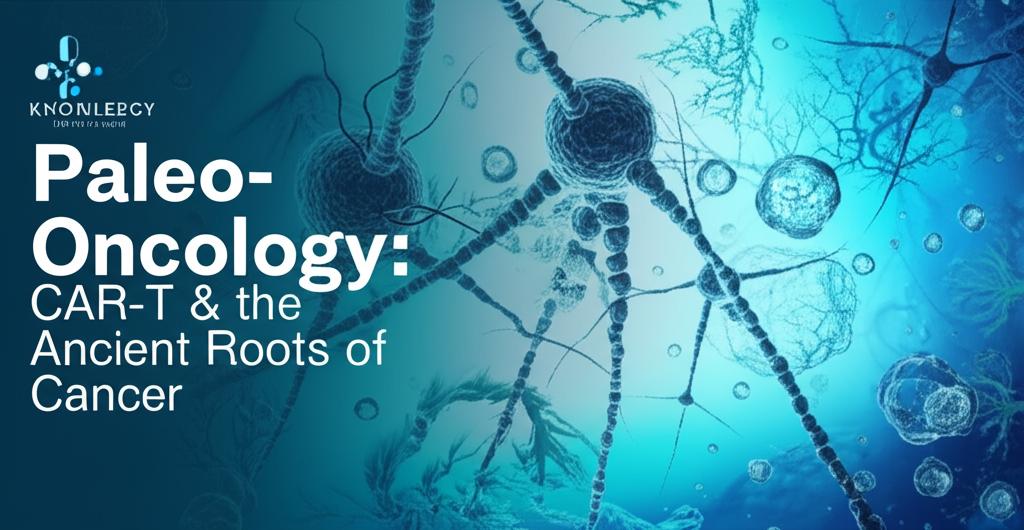Whispers from the Past: How Ancient Insights Are Shaping Tomorrow's Cancer Cures
The gleaming laboratories producing today's most advanced cancer therapies, like CAR-T cell treatments, might seem worlds away from ancient healing practices. Yet, a fascinating field called paleo-oncology is revealing that the conceptual seeds of immunotherapy – harnessing the body's own power to fight cancer – were sown millennia ago. This journey through time offers not just a history lesson, but a profound understanding of cancer's enduring presence and the timeless quest to conquer it.
Cancer isn't a modern malaise. Evidence of tumors has been found in ancient human remains, and even in dinosaur fossils, dispelling the myth that it's solely a product of contemporary lifestyles. Paleo-oncology, the study of cancer in ancient populations, meticulously pieces together this long history. Researchers examine skeletal remains and ancient texts, looking for tell-tale signs of the disease and how our ancestors might have understood and attempted to treat it. While ancient physicians lacked our sophisticated diagnostic tools, their observations of the natural world and the human body led to some surprisingly resonant ideas.
The core principle of immunotherapy – that our immune system can be a powerful ally against cancer – has ancient echoes. Historical accounts, some dating back centuries, describe instances where infections seemed to trigger tumor regression. For example, in the 19th century, Dr. William B. Coley observed that some cancer patients who developed skin infections (erysipelas) experienced tumor shrinkage. He then began intentionally treating cancer patients with bacterial toxins, a rudimentary form of immunotherapy known as "Coley's toxins". While controversial at the time, his work hinted at the profound interaction between the immune system and cancer. Even earlier, ancient Egyptian physicians like Imhotep diagnosed and described treatments for tumors, and traditional Chinese medicine utilized natural compounds, some of which are sources for modern chemotherapy drugs.
Fast forward to the 21st century, and we have CAR-T cell therapy, a revolutionary treatment where a patient's own T-cells (a type of immune cell) are genetically engineered to recognize and attack cancer cells. This highly personalized and potent therapy has shown remarkable success, particularly in blood cancers. The journey to CAR-T was built on decades of research, starting with the foundational understanding of T-cells in the mid-20th century, the development of monoclonal antibodies, and the first successful genetic modification of T-cells in the late 1980s and early 1990s. The first FDA approval for a CAR-T therapy came in 2017, marking a new era in cancer treatment.
But how does this connect to our ancient past? The link lies in the fundamental concept of leveraging the body's intrinsic defense mechanisms. While ancient healers wouldn't have understood the cellular mechanics, their attempts to stimulate the body's responses to disease, whether through herbal remedies, heat therapies, or even observing the effects of infections, reflect an intuitive grasp of this principle. Paleo-oncology helps us appreciate that the fight against cancer is an ongoing evolutionary narrative. By studying how cancer manifested in different environments and how our ancestors (and even other species) coped, we can gain insights into cancer's vulnerabilities and our own biological resilience.
The emerging field of evolutionary medicine further underscores this connection. It applies ecological and evolutionary principles to understand and treat diseases like cancer. By viewing cancer as an evolving entity within the body, researchers are developing novel strategies, such as adaptive therapies, that aim to control or even drive cancer to extinction by anticipating its evolutionary responses to treatment. This approach acknowledges that cancer cells, like any evolving population, adapt to survive, and that our therapies must be equally dynamic.
The latest advancements in CAR-T therapy are focused on expanding its efficacy to solid tumors, improving safety, and developing "off-the-shelf" options to make the treatment more accessible. Researchers are exploring new antigen targets, engineering CAR-T cells to overcome the immunosuppressive tumor microenvironment, and combining CAR-T with other therapies to boost its power.
The dialogue between paleo-oncology, evolutionary medicine, and cutting-edge immunotherapy like CAR-T is more than academic. It fosters a deeper appreciation for the long and complex relationship between humans and cancer. It reminds us that while our tools and understanding have evolved dramatically, the fundamental challenge – and the potential solutions – are deeply rooted in our shared biological history. As we continue to unlock the secrets of the immune system and refine therapies like CAR-T, we are, in a way, building upon a legacy of observation and innovation that stretches back to our earliest ancestors, all aiming for a future where cancer is a manageable, and ultimately curable, disease.

